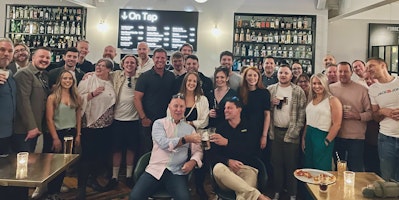-
Our Services
Data & Analytics Strategy
Modern Data Ecosystems
Management & Governance
Management & Governance
Data Integration & Engineering
Data Integration & Engineering
Analytics & Data Science
Analytics & Data Science
Modern Data Ecosystems
Artificial Intelligence
Data & Analytics Strategy
We help you create a Data Strategy based on business outcomes
Modern Data Ecosystems
We design, architect and help you build your Modern Data Ecosystem
Management & Governance
We build solid foundations for you to manage and govern your data
Data Integration & Engineering
We help you gain control over your data sources and pipelines
Analytics & Data Science
We craft analytics operating models that allow value to be delivered at scale
Artificial Intelligence
We use AI and LLMs to accelerate, augment and architect modern data solutions
Data Strategy

Data Strategy
Read More
Services
Services
Support
Services
Services
Helpful Resources
Helpful Resources
Helpful Resources
Our Approach
Need Help?
Are you unsure on what service you need? Contact Us
-
Technology Partners
Management & Governance
Data Integration & Engineering
Analytics & Data Science
Technology Partners
Our integrated approach to modern data ecosystems delivers measurable results through a combination of expert consultancy and best-in-breed technology.
See all partners -
About
About Amplifi
We're the go-to data consultancy that delivers measurable results for our clients. How? Through our team of dedicated data experts.
About Us - News & Resources
- Contact Us
News & Resources

Case Study | Business-led, evidence-driven: Building Hyphen’s data strategy for growth
Read how Hyphen gained clarity on its data challenges and created a practical roadmap for change, grounded in business goals and input from across the organization. Blog
Article | Salesforce + Informatica: Why data fundamentals still shape the future
Amplifi’s Chris Colyar, Stuart Squires and Chris Collings provide a breakdown of how Salesforce and Informatica’s partnership impacts core platforms, data products, and the shift from best-of-breed to integrated ecosystems. Resource
Webinar | Amplifi x Microsoft: Real impact, real fast with Fabric and Purview
Hear from our expert consultants with hands on experience, as they share a playbook for unlocking tangible value from your data at speed, with Mircosoft Fabric and Microsoft Purview. News
Amplifi acquires Snow Fox Data, advancing AI, analytics and data science capabilities
DALLAS, TX, June 3, 2025 - Amplifi, a leading data and AI consultancy, has announced the acquisition of Snow Fox Data, a Wisconsin-based AI and analytics consultancy recognized for its deep expertise in data engineering, analytics, data science, and AI consulting. Blog
Voices | Chicken or Egg? A Data Paradox
A decade later, the data quality debate rages on: govern first, or fix later? In this unedited reprint of a 2015 article, Stuart Squires, SVP Strategy & Consulting at Amplifi, explores the enduring paradox of data governance through a vivid, relatable analogy - and invites reflection on how far we’ve really come. Blog
Case Study | Troy: Building AI and ML capabilities to solve business challenges
Read how Amplifi helped Troy, an engineering distributor group, streamline their product classification process using AI and machine learning, reducing manual input and improving accuracy, while also laying the foundation for future AI-driven innovation. Blog
Why Data Products were the talk of Gartner Data & Analytics Summit 2025
Learn why data products are the new non-negotiable in modern data strategies, insights from Gartner D&A Summit 2025 and how Amplifi supports delivery and governance. Blog
Case Study | Ongoing support services for leading wholesale distributor
Read how a leading wholesale distributor uses Amplifi's support for managing over 37,000 SKUs globally, ensuring efficient product data management and minimal disruptions with expert guidance. Blog














